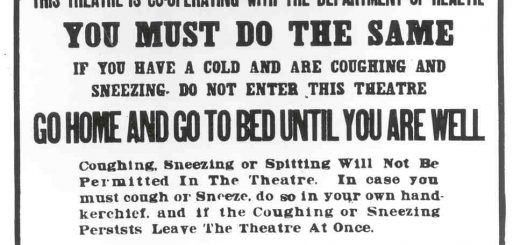Cannabis — What Do We Know?

Cannabis, hemp, marijuana, pot – we have many names for it, but how much do we really know about this controversial plant? Some claim it to be a harmless recreational drug, others say it contributes to mental illness, and some believe it has valuable medicinal properties. At this Glasgow Science Festival event, a panel of experts summed up the facts about cannabis, and the benefits and risks of using it in medicine.
Daniele Bolognini, a pharmacologist at the University of Glasgow, kicked off the session with a history of this ancient medicine. Originating in China up to twelve thousand years ago, it was first utilised as hemp – a material used to make rope, textiles and paper. It took around seven thousand years for its value as a medicine to be recognised, with the revered plant subsequently following population movements across the continents. Records from the 1840s show the first uses of medicinal cannabis in the UK, when pharmaceutical companies began peddling extracts and tinctures to treat a wide range of illnesses – muscle spasms, rheumatic pain, epilepsy – even Queen Victoria’s menstrual cramps. But then, as now, the authorities were quick to nip recreational use in the bud, with the first legal restrictions being introduced in 1928. The swinging sixties saw a rise in recreational use, and in 1964 scientists isolated the psychoactive ingredient, tetrahydrocannabinol, or THC. And so began modern scientific research on cannabis.
It’s now known that THC is a member of a group of chemicals called phytocannabinoids (‘phyto’ meaning ‘plant’). Cannabis also contains cannabidiol, a phytocannabinoid that is similar in structure to THC, but is not psychoactive and opposes many of THC’s effects. This is important because it turns out that the balance between these two chemicals can drastically alter the effects of cannabis (more on this later). Worryingly, the THC content of street cannabis has trebled in the last twenty years, making it more important than ever to understand just how these chemicals affect us.
With this, Roger Pertwee took the floor. Pertwee, from the University of Aberdeen, has been researching cannabinoids for more than forty years. He specifically works on endocannabinoids (‘endo’ meaning ‘within’) – chemicals related to phytocannabinoids but produced within our own bodies. We have receptors that are activated by these chemicals, and Pertwee described cannabinoids as the keys that unlock these receptors and open the door to their effects on the brain and other parts of the body. It seems that humans have a built-in system for making and sensing cannabinoids, which means these chemicals must serve a biological function beyond just getting us high.
Research has found that endocannabinoids have a host of protective functions throughout the body: from pain relief, to anti-depressant effects, to protecting against cancer and stroke. But Pertwee emphasised just how complex this system is. Cannabinoids don’t just unlock their own receptors, but many others too, and synthetic versions (both licenced drugs and the recently banned ‘legal highs’) as well as those derived from cannabis can have a different range of actions to our natural cannabinoids. The take-home message? Medicines containing chemicals based on cannabis can be highly beneficial, but we must make sure we understand their effects.
Next, we heard from medical consultant William Notcutt, who specialises in pain management and has been treating patients with cannabinoid-based medicines for many years. He was quick to stress the difference between cannabinoid-based medicines, which go through clinical trials and have proven safety and effectiveness, and unregulated ‘medical marijuana’.
We heard that cannabinoid-based medicines are prescribed for severe pain associated with cancer and arthritis, but also for childhood epilepsy and multiple sclerosis. All of these conditions have a major impact on patients’ quality of life, so these medicines have fantastic potential. One major advantage compared with more popular opiate-based pain medicines like morphine, is that patients don’t build up a tolerance. With opiates, patients respond less over time and have to increase the dose to get the same effect. This doesn’t happen with cannabinoid-based medicines. Unfortunately, their cost and a lack of investment in research (as well as a lack of awareness among medical professionals) have kept them from becoming part of most doctors’ toolkits.
When asked about the use of cannabinoid-based medicines in the UK, Notcutt said it is rare to find GPs with the knowledge to prescribe such drugs. He also warned that depriving patients of these medicines drives them towards the unregulated recreational drug market. More funding, research and education are critical in making sure these medicines get to the patients who can benefit from them.
The final speaker of the afternoon was Amir Englund, an “experimental psychopharmacology” researcher at King’s College London. Englund is interested in cannabis dependency and the link between cannabis use and schizophrenia. Having heard from William Notcutt that cannabinoid medicines are not addictive, it was interesting to learn that an average of 9% of recreational cannabis users develop dependency, suffering either psychological or physical withdrawal symptoms. The rates of dependency increase when users start younger, or when the type of cannabis used is the higher-THC form known as skunk.
As early as 1987, studies noted a correlation between cannabis use and risk of schizophrenia, but this could be due to many different factors, like the idea that schizophrenia sufferers are more likely to turn to recreational drugs in general. Englund described his own research, which found that schizophrenic symptoms do increase in response to THC in healthy volunteers, but giving cannabidiol alongside THC can protect against this effect. Cannabidiol also protected against both memory impairment and paranoia caused by THC. This suggests that the balance between the levels of THC and cannabidiol in recreational cannabis might be incredibly important in determining the risk of schizophrenia, especially given the rising levels of THC in street cannabis. It also highlights a possible use for cannabidiol as a schizophrenia treatment, although more research is needed on this.
A lively question and answer session followed the talks, with audience members asking everything from “What’s the best way to take cannabis?” to “Would legalising cannabis be good or bad for research?” The consensus among the speakers was that cannabis is a good thing: it has proven therapeutic effects and has resulted in new medicines for a range of diseases and symptoms. However, the speakers agreed that understanding this drug and its risks is imperative to harnessing its power. Perhaps events like this one can influence public opinion and lead to more support for research that could change the lives of patients.










